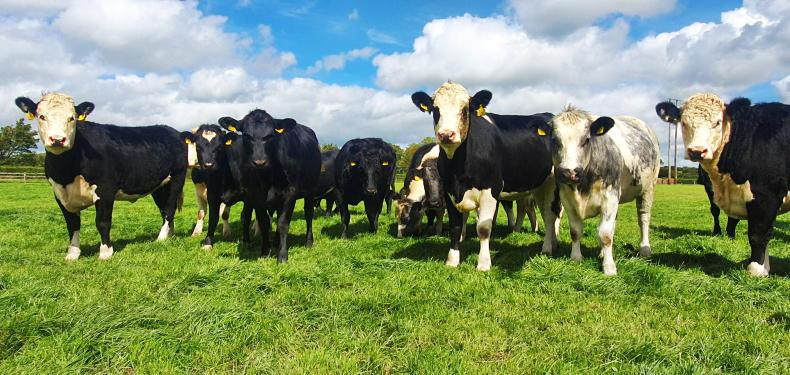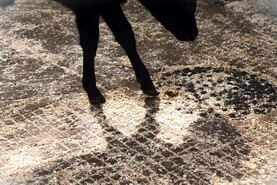It is often said that there is as much variation within a breed as there is across breeds, and looking at the production data from the Thrive demonstration farm for the 2019-born stock this certainly holds true.
With all the 2019-born animals now slaughtered, we are able to look at some of the facts and figures from the group.
We must remember that this is a relatively small sample size and therefore we must be careful with any extrapolation of the data to a national scale.
However, there are some positive outcomes from this dataset. The first, and most important of these is a positive correlation between the Dairy Beef Index (DBI), value of beef, and the actual carcase weight achieved by the animal.
What this really means is that as the beef value of the DBI increased, we were more likely to see an actual heavier carcase weight from the animal on the ground.
Tables 1 and 2 look at key slaughter performance data from both the heifers and bullocks. These are average slaughter ages, kill-out percentages, carcase weights and grades for each sire with more than one progeny on the farm.
Interpreting the data from this table alone can be misleading as we often look at carcase weight as being the most important factor and therefore we see the sires delivering the heaviest carcase weights to be the best.
Kg carcase / day of life
An important factor is the average amount of carcase weight the animal is growing every day it is on the farm. Figures 1 and 2 look at kg carcase/day of life.
While the differences between sires may seem small, with extremes of 0.07kg/d and 0.10kg/d for heifers and bullocks respectively, at an average price paid of €3.82/kg carcase and over a 600-day lifetime this means a difference of almost €230 in output value between sires. Even within breed there are huge differences. Within the heifers, if we take Hereford bull SPL at 0.43kg carcase/day and HE4291 at 0.48kg carcase/day, there is a lifetime difference of €115/head in output value.
Kg concentrate / kg carcase weight
Over 75% of all variable costs associated with dairy-beef production systems can be attributed to feed. Of this, the most expensive feed input is concentrate.
The aim on the Thrive demo farm is to slaughter as many cattle off grass at the end of the second grazing season as possible to avoid the need for an indoor finishing period.
This allows the farm to carry more stock overall, as most of the winter accommodation can be used for housing weanlings. In order to get stock off farm at decent carcase weights at a relatively young slaughter age, meal feeding was introduced from 1 August to around 40% of the finishing stock with the remainder being fed from 1 September.
Lifetime concentrate input varied from 377kg to 683kg for heifers and 546kg to 927kg for bullocks. While the higher concentrate input tended to be for the later-maturing type animals, again there was huge variation within breeds.
Feeding meal to all finishing stock helps hit target carcase fat specifications, reduces the days to slaughter and also improves kill-out percentage. If feeding meal results in a significant increase in carcase gain, then there is an economic benefit in doing so.
For this reason, comparing concentrate input/kg carcase weight (Figures 3 and 4) is a good barometer of the success of meal feeding to finishing cattle. Looking at the extremes, there is a difference of 0.8kg concentrate/kg carcase. At an average carcase weight for the bullocks of 323kg this means a difference between two sires of a quarter of a tonne less meal (€65/head) to achieve the same carcase weight. This difference is as much as 200kg between two sires from the same breed.






 This is a subscriber-only article
This is a subscriber-only article











SHARING OPTIONS: